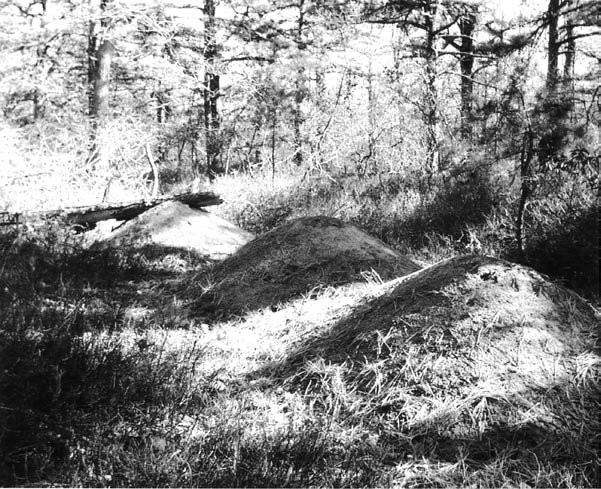Allegheny Mound Ant, Formica exsectoides
The Allegheny mound ant, Formica exsectoides Forel, is a common mound-building ant of the northeastern and central United States. Workers are approximately 3/8 inch long (1 cm) with a reddish-tan head and thorax, and a dark brown abdomen. In suitable habitat, F. exsectoides will form dense populations, their presence easily discernible due to conspicuous mound-type nests which can be as large as 15 feet (4.6 m) in diameter and 4 feet (1.2 m) high. At one site near Altoona, Pennsylvania, researchers counted more than 30 large mounds per acre. Despite the conspicuous nature of F. exsectoides nests and its wide geographic range, relatively few papers concerning this species have been published since H.C. McCook’s first paper in 1877.
Nests tend to be clustered in the habitat. Nests in each cluster oſten will share foraging trails and resources. Although there is little aggression between workers from different nests or nest clusters, the workers still show fidelity to a home nest. Nests of F. exsectoides have multiple queens (polygynous) although there is tremendous variation in the number of queens per mound. Over 1,400 queens were reported in one mound, but that is probably an anomaly. Most mounds probably contain fewer than 20 queens. Due to the large number of queens, the reproductive output of a nest can be prodigious resulting in large numbers of workers in a colony. More than 250,000 workers have been found in some nests. Reproductive forms (alates) are present in the nests from
Habitat has a significant effect on physical characteristics of F. exsectoides nests. Forest nests tend to be significantly larger in height, width, length, nest footprint and volume than nests in meadows. In general, the nests are round, but it is not uncommon to find elongated nests that are orientated to the sun. The shape of a nest and its orientation may help the ants to maintain a relatively constant internal temperature and relative humidity.

Three large nest mounds of Formica exsectoides in a Pennsylvania forest clearing

Alimentary System


